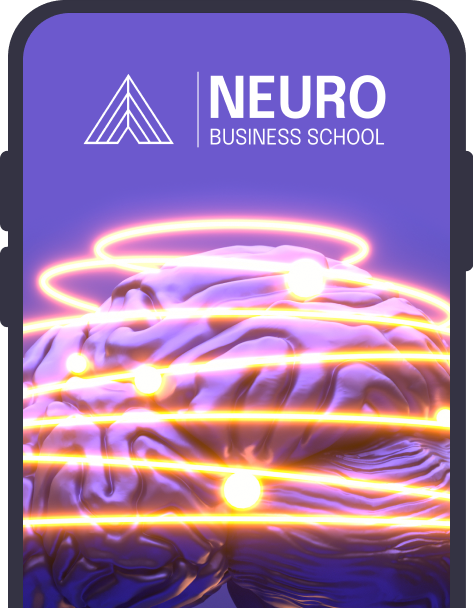Have you ever felt like you’re missing out on that once-in-a-lifetime concert, or that you haven’t even been to that coffee shop everyone’s talking about and enjoying yet? This fear of missing out is known as FOMO.
The irrational fear we experience in the face of scarcity is what drives 65% of purchasing decisions, according to studies from the Journal of Consumer Research. It’s not a manipulative strategy; it’s understanding FOMO syndrome to (ethically and strategically) sell like never before.
Do you want to learn what FOMO is, see examples, how to apply it, and how to sell more to your customers without making them feel pressured? Then keep reading; this will interest you!
What is Fomo?
First of all, let’s answer the meaning of FOMO… That acronym stands for Fear of Missing Out. It’s a strategy widely used by companies that create flash sales, exclusive offers, or limited stock to boost sales.
Psychology behind the effect
Companies like Amazon and Zara embrace the basic principle of every human being: the fear of losing. This aversion, along with other factors like social proof—”20 people are watching it”—can increase conversions by up to 22%.
Ready to understand what triggers this compulsive hack in customers and dominate the industry?
Need for belonging
That need to belong is vital, so when people around us are enjoying an experience, we don’t want to be the exception. This is why up to 73% of people buy viral products just to feel like they fit in (Deloitte data from 2023).
Social comparison and social validation
According to psychologist Leon Festinger, our brains constantly evaluate what’s happening in our environment and what others are doing, leading us to compare ourselves. Seeing friends, for example, enjoying a product or experience sets off alarm bells and leads people to make comparisons.
Thoughts like “I want to try it, I want to go, I don’t want to miss it, I want to be with them” arise, intensifying FOMO and that feeling of wanting to live up to expectations.
Dopamine + Immediate Reward
Dopamine, the neurotransmitter of desire and pleasure, is released when we anticipate something, even without having it yet; this is why messages with urgent tones like “Offer valid only from 10 a.m. to 12 p.m.” trigger that feeling of anticipated pleasure, causing more than 68% of people to make impulse purchases (Stanford University 2022).
Loss Aversion
Let’s face it, none of us like to lose, especially when it comes to opportunities or experiences. Studies like that of Nobel Prize winner Daniel Kahneman have shown that the pain of losing something is much greater than the satisfaction of gaining something equivalent.
This means that when you’re faced with messages like: “You’ll miss out on a 50% discount if you don’t act today!” Even if it’s not something you really need, the offer is so irresistible that you end up giving in to the feeling of scarcity.
Examples of the effect of Scarcity and Fear of Loss in marketing
Have you seen messages on the web that say “Only 3 rooms left at this price” or “Sign up today and receive a special discount”? These are clear examples of how brands like Amazon or Booking.com use neuromarketing and FOMO to their advantage to encourage users to make quick decisions.
But these are just two of several examples where you can benefit from this technique. Below, we give you three examples of how and which companies have applied the scarcity effect and the fear of missing out:
– Real-time user activity: When you show customers recent actions from other users, two things happen: social validation and a sense of urgency. For example, programming your e-commerce site with “Karla purchased this item 5 minutes ago” gives the impression that it is popular or limited, encouraging them to purchase it before it sells out.
– Exclusive offers: This involves creating a loyalty program or club in which regular customers receive early bird offers, discounts, or unique products, thus generating a sense of belonging.
Brands like Starbucks apply this example by giving their VIP customers free drinks, personalized rewards, and special promotions, which encourages coffee lovers to feel loyal and buy more frequently.
– Flash sales: Posting eye-catching offers on social media for a short period of time creates a sense of urgency, urging users to act immediately. This can be achieved with a flash sale on Instagram, for example, that says: Offer valid for 30 minutes only!
This type of campaign can achieve quick conversions and keep your followers checking your social media regularly to stay up to date with your promotions.
Why use FOMO in your business?
The answer is as simple as: because it works! Although it may sound extreme, the fear of missing out really sells, and it’s one of the most widely applied strategies for small and large companies because it triggers immediate emotional responses in potential customers.
It’s no wonder giants like Nike, Starbucks, McDonald’s, and Amazon include it in their strategies. In addition, applying FOMO to your business helps you:
1. Increase conversion and sales, as the consumer’s brain reacts to urgency.
2. Reduces customer hesitancy that postpones the purchase, giving them the push they need.
3. It increases the customer’s perceived value of the product; seeing it as scarce or exclusive makes it seem more valuable.
4. Customers love to show off what’s exclusive, and that sells. In fact, a study by TumtoNetwork indicates that in 90% of cases, user-generated content (UGC) influences purchasing decisions. This means that if a customer gets your super-exclusive product, they can share it, generating more desire and sales thanks to FOMO.
How I learn to apply FOMO to my sales
Getting your customers to shop like it’s Black Friday is possible, and the fact that you’ve read this far isn’t luck; it’s neuromarketing, one of the things we teach at Neuro Business School.
With us, you can earn a Bachelor’s or Master’s degree in this discipline so you can effectively apply these mental hacks and take your business where you really want it to be.
Enroll today and turn your brand into a conversion machine!
Frequently asked questions
What is FOMO syndrome?
It’s a psychological condition in which we constantly feel like we’re missing out on something important, such as an experience, opportunity, or possessions that others enjoy; and some studies suggest that nearly 70% of young adults experience it at some point.
Can FOMO have negative effects on brands?
The reality is yes. If it’s overused or used in a misleading way, for example, “only 10 spots left” and it’s maintained for three months, customers perceive it as untrustworthy, and it can generate rejection or affect the company’s reputation.
How to apply FOMO without falling into deceptive practices?
First, transparency above all. If you say “last units,” let it be true. Also, give the customer a genuine benefit—that is, don’t just push for a sale—highlight valuable opportunities like discounts or exclusive access.




